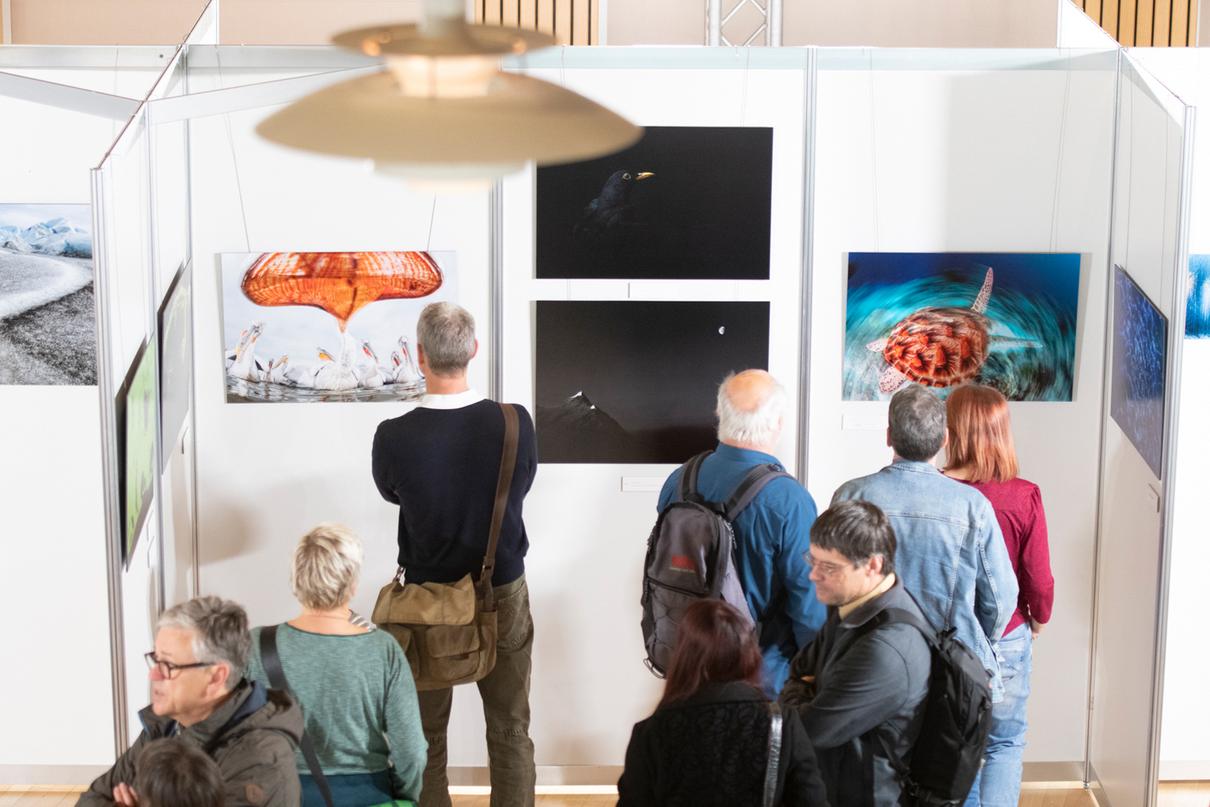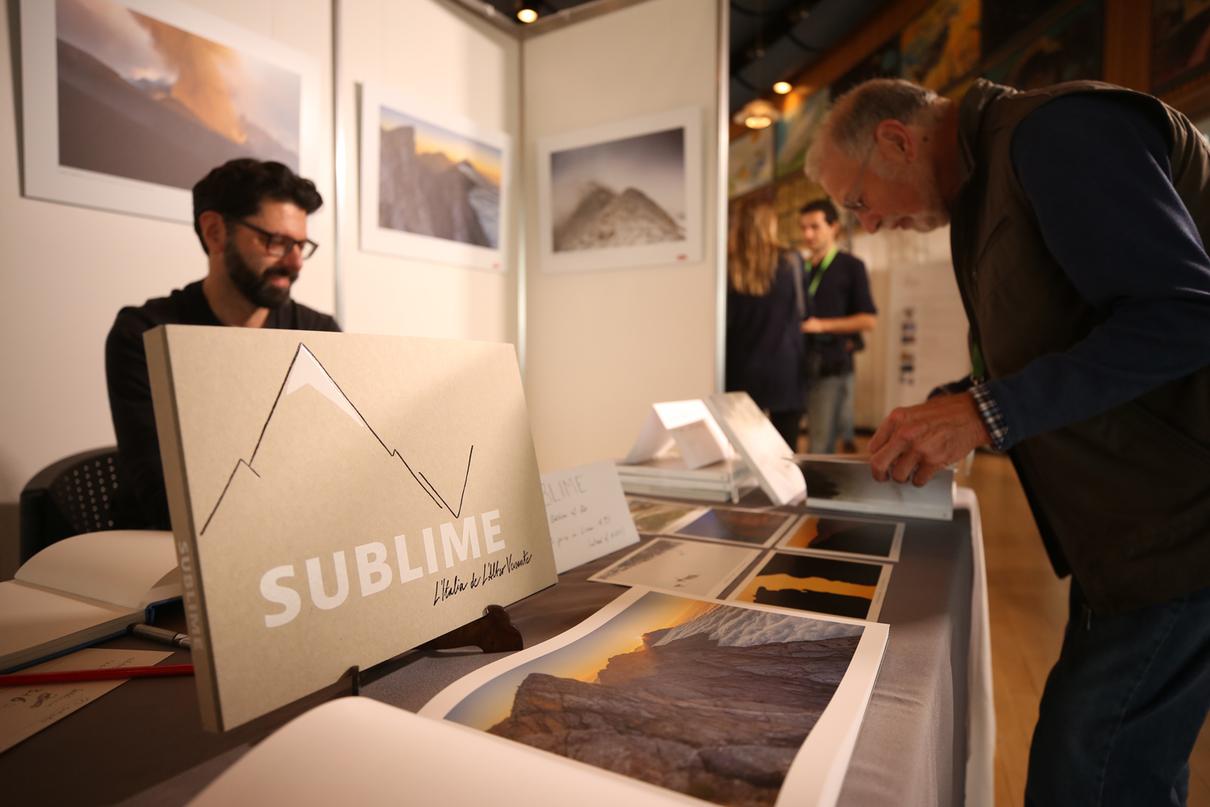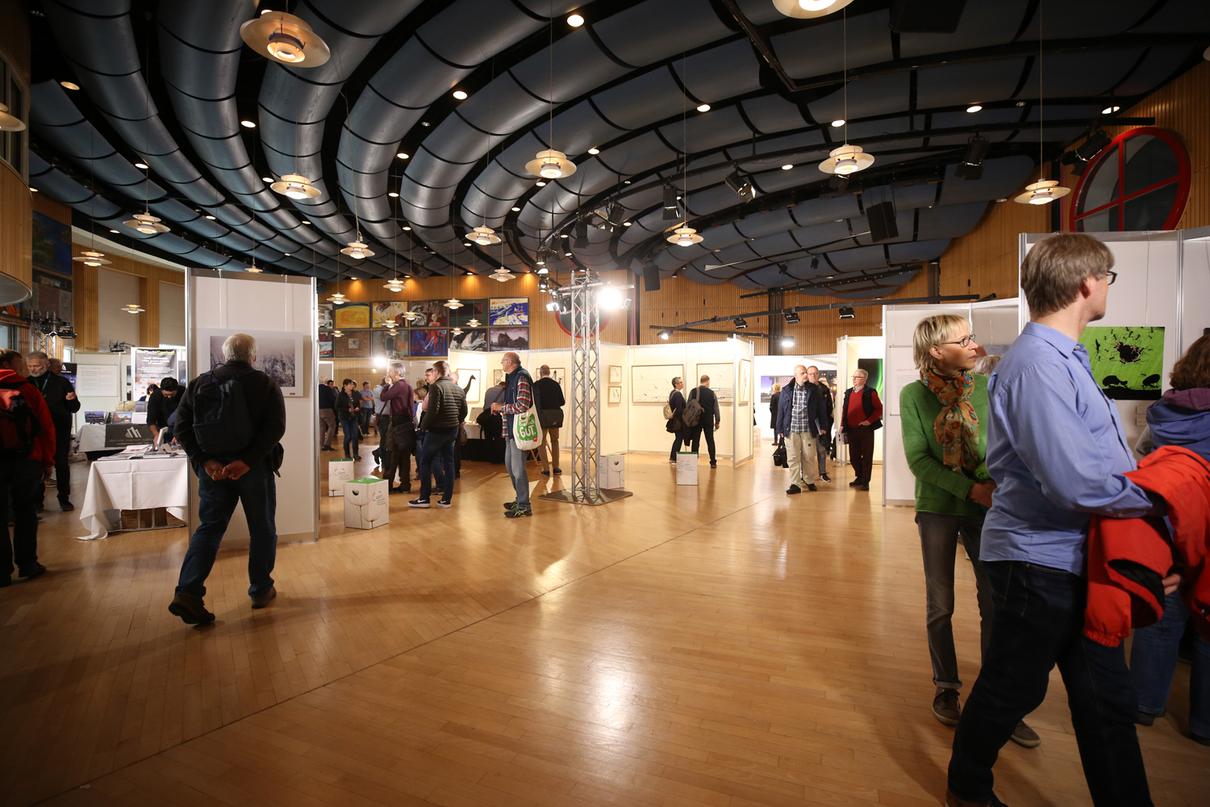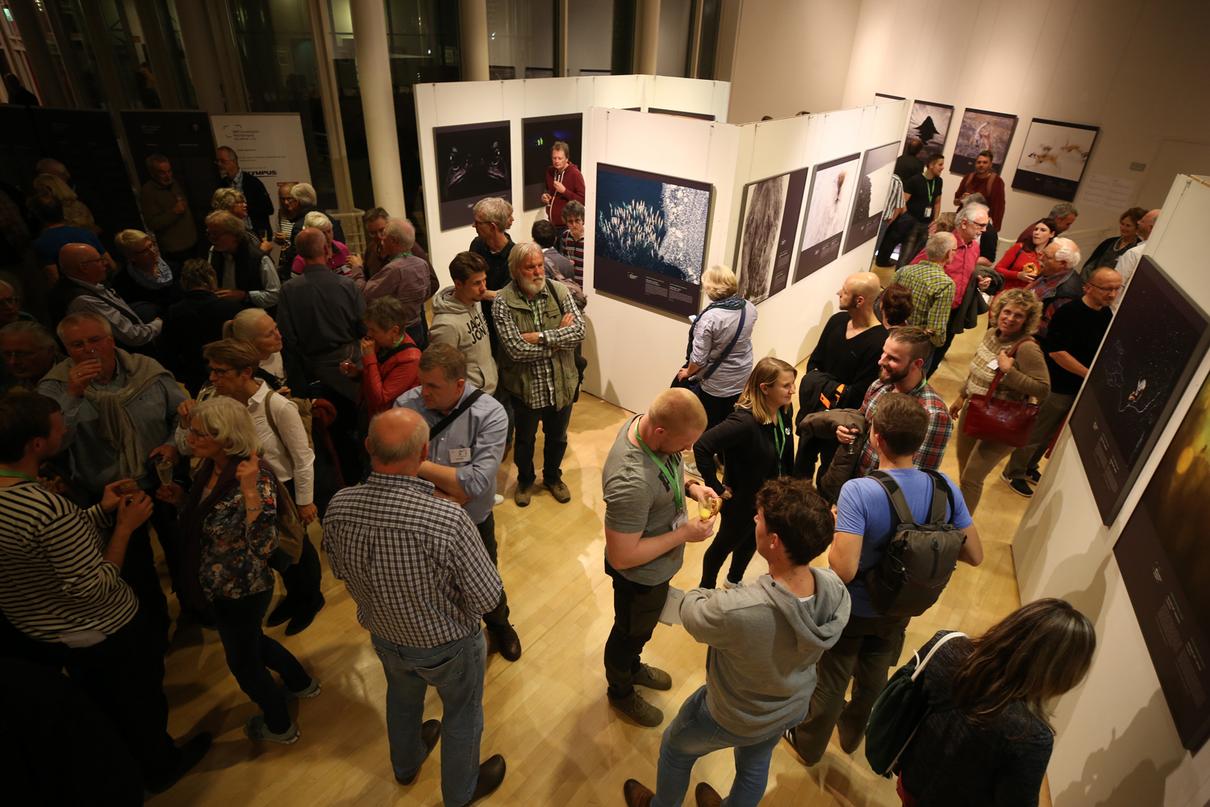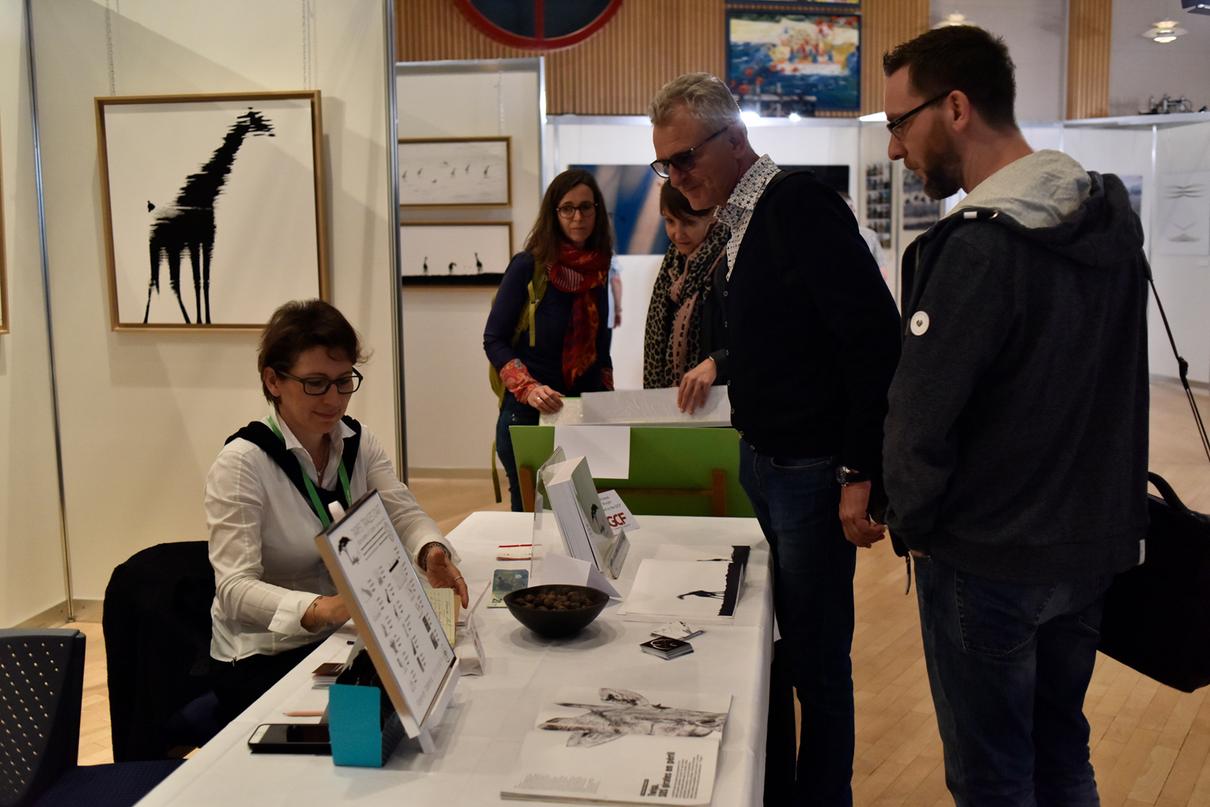Our exhibitions in the 'Bildersaal' - Immerse yourself. Marvel. Linger.
Every year, the exhibitions in the image gallery 'Bildersaal' offer an impressive variety of breathtaking photographs that capture the beauty and diversity of nature in all its glory.The festival exhibitions present a wide range of subjects, from wildlife and breathtaking landscapes to macro shots of plants and insects. Each photograph tells a story and reveals the extraordinary connection between photography and nature. The photographers are masters at capturing the right moment.
The exhibitions at the International Nature Photography Festival are not only visually appealing, but also contribute to raising awareness for environmental protection and nature conservation. The beauty and fragility of the natural wonders on display remind us how important it is to protect and preserve our environment.
Élise Pire | Forest watercolour paintings

Forest watercolour paintings
Discover the quiet magic of ancient forests in this series of evocative watercolour paintings. Stags, owls, wolves, and ravens guide you through fragile ecosystems — a journey painted with emotion, brushstrokes, and wonder.
About Élise Pire
Élise Pire is a watercolour artist, bioengineer, and naturalist based in Namur, Belgium, where river and forest meet. Passionate about birds and the natural world, Élise blends scientific precision with deep emotion. Her style plays with the flow of water and pigments – often dark, always seeking light. Her artistic world is shaped by family walks, shifting light, and shared moments with fellow nature lovers. While most of her paintings are based on photographs, fieldwork remains a precious luxury and an endless source of inspiration. Her current project explores ancient forests – sanctuaries of biodiversity. “We fall in love with what amazes us. We protect what we love.”
Christine Averberg and Daniel Böttcher | Nature at our doorstep

Nature at our doorstep
With their collaborative project naturbelichtet, Daniel Böttcher and Christine Averberg explore the natural world quite literally at their doorstep. The duo's aim is to capture everyday scenes in ways that are compelling, creative, and rich in detail. With the help of their cameras, native wildlife, wayside plants, and seemingly ordinary wooded landscapes are transformed into evocative, almost magical impressions. The photographers' playful curiosity is especially sparked by the interplay of natural light and specialty lenses.
Daniel Böttcher and Christine Averberg have shared their passion for nature and photography since 2020. Daniel, originally from the Ruhr region, feels at home with minimalist/classical as well as abstract/ creative approaches to nature photography. He now lives in the picturesque countryside near the city of Münster. Christine, native to Münsterland, has developed her own distinctive visual style over time. What unites the two photographers is the joy of being outdoors while discovering fresh perspectives and inspiring each other along the way.
Ira Hilger | On the nature of plants

On the nature of plants
Botanical illustrations reimagined
This exhibition invites us to view plants in an unusual light – not as a fleeting motif in nature but as a carefully composed artistic interpretation. Ira Hilger’s work presents a contemporary reimagining of traditional botanical illustrations, drawing inspiration from historical role models such as Ernst Haeckel and Maria Sibylla Merian, while using the tools of modern photographic art. Ira’s aim is to render the essence of plants visible in precise detail – reflecting their form, their growth, and their demise. Three series illustrate this concept: Metamorphoses condenses an entire growing season into a single panel; Botanical snapshots captures moments of characteristic vitality; and The poetry of decay explores themes of transience and renewal. Hilger sees her work as an invitation to pause and marvel - at nature as a wonder worth preserving in all its rich diversity.
www.florafoto.at
Trained as a biologist, Ira Hilger began to explore photography in 2010. A workshop with nature photographer Niall Benvie in 2021 marked a turning point in her artistic development. Through meticulous studio photography, careful digital editing, and a deep connection to the natural world, Ira creates works of timeless clarity and striking aesthetic appeal.
Jan Piecha and Dominik Janoschka | Raccoon capital of Germany

Raccoon capital of Germany
Originally from North America, raccoons have only been living in Germany since 1934 – but hardly any city is as closely associated with them as Kassel. They are considered secret roommates and yet rarely appear openly.
They are omnipresent in the cityscape: as graffiti, on postcards or in newspaper articles. And almost everyone in Kassel knows of an encounter or a story about them. But where do raccoons spend their time? How do they live? And what does it actually mean to live in the ‘raccoon capital’?
Jan Piecha and Dominik Janoschka set out on a night-time search for clues. Over several years, they accompanied the animals with their cameras, observing their behaviour – patiently, often in secret. The pictures shown in the exhibition provide rare insights into the life of a species that has carved out its own niche in urban space.
Creative Nature Photography

Markus Botzek | Frank Brehe | Silke Hüttche | Thomas Scheffel | Sebastian Vogel | Sandra Westermann
This exhibition presents selected works from the book Creative Nature Photography – a collaborative selection by six photographers. The photographs represent different perspectives, individual working methods and distinctive styles. The focus is on close observation: colours, lines, light, structures and details become creative tools with which nature is interpreted in a personal and creative way. Many motifs seem familiar – yet appear in a reduced, often surprising form.
The exhibition shows a representative cross-section of this diversity – and invites visitors to rediscover nature photography.
Benoist Clouet | Lands of Silence

Lands of silence
"Photographing silence – is it absurd? Is it even possible?"
Silence is ever-present for those who venture into the polar realm, far removed from human activities. Silence heightens our senses. It isolates and magnifies every sound, subtly revealing hidden beauty.
Lands of silence allows us to discover the fleeting union of stillness and snow, where, in quiet presence, animals reign over a world of extreme and fragile beauty.
In this exhibition, Benoist Clouet presents both bright, pristine images in which animals blend seamlessly into the whiteness of the snow, and darker, almost monochrome compositions, where a single shaft of light reveals the silhouette of a bear or a penguin in the final glow of the day.
Step closer, observe, listen… Silence is not an absence: it is an opening. It reveals unexpected paths and uncharted territories. It reconnects us with what truly matters and invites us to experience the present moment fully and deeply.
About Benoist Clouet
French nature photographer Benoist Clouet has spent the past 25 years documenting the natural world, with a focus on remote, pristine regions. In his work as a professional photographer in the last 15 years, he has been driven by a passion for cold, icy, vast and untamed landscapes. For over a decade, Clouet has explored the polar regions extensively—travelling across Norway, Sweden, Iceland, Japan (Hokkaido), and Patagonia. His work includes more than 20 expeditions to Svalbard and three journeys to Antarctica.
Photography is Benoist Clouet’s way of capturing and sharing the fleeting, fragile beauty of landscapes profoundly affected by climate change. His work is distributed by Naturagency, supported by Sony France and Camara, and represented by the Vent des Cimes art gallery in Grenoble. He is also the author of two books: 80° NORD – Svalbard (2014, awarded “Best Book on the Arctic 2015”) and Lands of Silence (2022).



